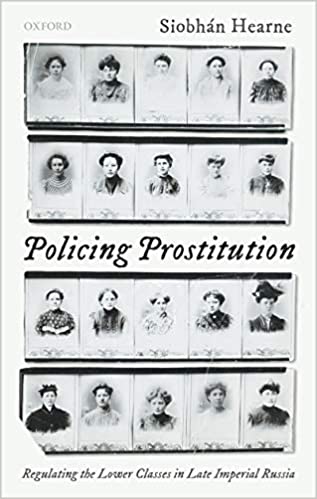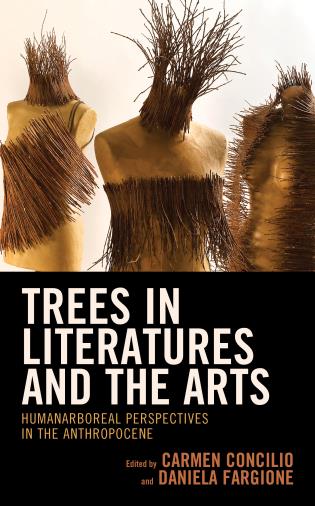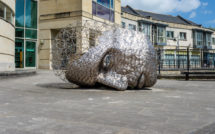
 Policing Prostitution: Regulating the Lower Classes in Late Imperial Russia
Policing Prostitution: Regulating the Lower Classes in Late Imperial Russia
By Siobhán Hearne
Publisher: Oxford University Press
Recommended by Emily Schuckman Matthews
Siobhán Hearne’s Policing Prostitution: Regulating the Lower Classes in Late Imperial Russia offers a comprehensive look at the official policies and practices associated with the management and control of the commercial sex industry in Tsarist Russia (1840-1917). Drawing on extensive archival research and casting a wide geographical net, Hearne draws the reader into the everyday realia of female sex workers in the vast empire. Each chapter explores the impacts of regulation on various actors in the commercial sex industry including the women who sold sex, male buyers, procurers and procuresses, law enforcement officers, and the community at large. Throughout the text, Hearne examines pertinent themes of gender, migration, labor, urbanization, and modernization with specific emphasis on paternalistic state control of the Empire’s lower classes. The inclusion of archival images and documents enhances the narratives Hearne explores and draws the reader into the lived realities of the state regulated sex industry during that time. Also impressive is the extensive research, which takes the reader beyond Russia and into the world of commercial sex in other parts of the Empire, including Ukraine, Belarus, Latvia, and Lithuania, allowing the reader to not only get a sense of life in these places, but also gain insight into power dynamics between local priorities and Tsarist policies.
 Trees in Literatures and the Arts: HumanArboreal Perspectives in the Anthropocene
Trees in Literatures and the Arts: HumanArboreal Perspectives in the Anthropocene
By Carmen Concilio and Daniela Fargione (eds.)
Publisher: Lexington Books
Recommended by Hélène B. Ducros
Much has been unveiled lately about the secret lives of trees, their modes of communication and cooperation with other nonhumans, as well as the ways in which they transmit and memorize information about their surroundings and cope with danger. This fascinating scholarship often emanates from specialists trained in ecology or botanical sciences. Trees in Literatures and the Arts approaches trees through their interventions in artistic and literary productions, thus crafting a new epistemology fostering the vegetal as cultural and societal actor. Carmen Concilio and Daniela Fargione have gathered a brilliant collection of interdisciplinary and international contributors who, together, cover a range of textual genres—from novels to poetry—and artworks—images of and with trees—to propose novel perspectives about the connection between humans and the arboreal world, whether trees are envisaged individually or as forests. Presenting the book as a cry against unbridled deforestation—“one of the greatest emergencies of the twenty-first century”—the editors cue their audience into rethinking trees as a set of relations that bridges humans with nonhumans. The volume shows how art and literature assist humans in gaining awareness about the multiplicity and plurality of the humanarboreal, delving into the real and symbolic role of trees in people’s lives. All chapters guide readers away from the narrow anthropocentric conceptualization of trees as a resource to be consumed that has perpetuated a flawed hierarchical nature-culture divide. Through an analysis of various media where trees manifest in fundamental ways, the contributors manage to destabilize an ethos based on the illusion of human control over nature and instead strive for an acceptance of the wooded world based on a mutual recognition of agency.
Positioned at the center of humans’ relationship with the plant-world, the tree in turn becomes an embodiment of the nation, a liberation from cultural oppression, a symbol, spirituality, pedagogy and wisdom, mnemonic mechanism, or mediator with the divine. Making explicit these linkages between the material and the intangible across different temporalities gives new meaning to “hugging a tree” by changing the gaze onto the arboreal and bringing an alternative tonality to alert to the need for urgent solutions to climate change. As global leaders ponder on the future of the planet at the COP26, the volume succeeds at pointing to the humanities as a crucial conduit not only to sensitize individuals by allowing emotions back into our bond with nature, but also to decenter human practices to afford more space for nonhuman voices. This call for botanical activism through the arts and literatures will undoubtedly resonate with ecocritical scholars, environmental humanists, researchers in media and literary studies, and even with legal experts, who should all find inspiration to examine human-nonhuman entanglements anew. Energizing the conversation about the Anthropocene, this collective effort demonstrates that to tell the story of the naturecultural and solve ecological crises, the sciences and the humanities must illuminate each other and interlace their branches.
Published on November 9, 2021




